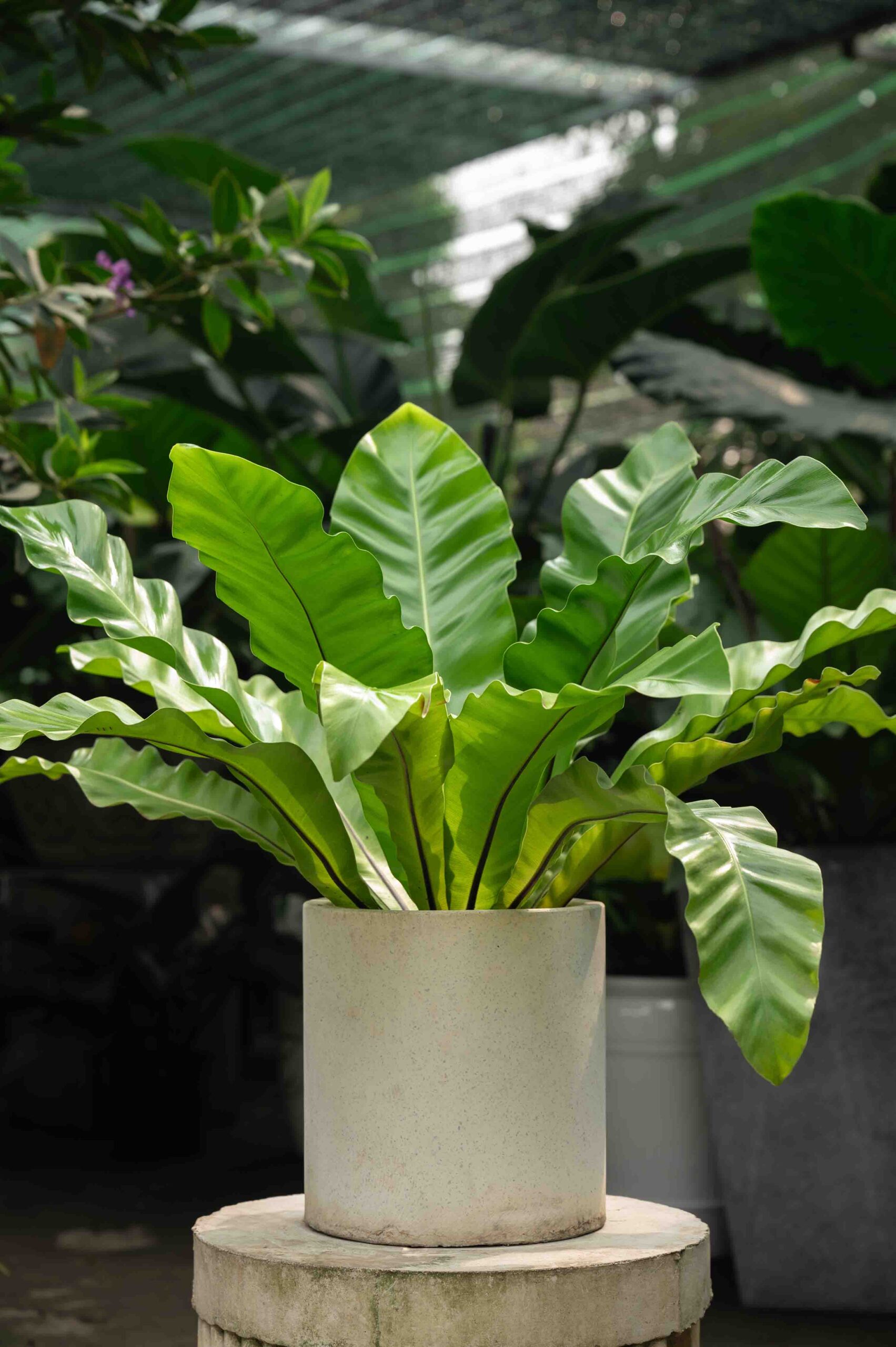The monstera plant is a very popular ornamental plant because of its unique beauty and feng shui significance. However, many people encounter the problem of monstera leaves turning yellow, losing the freshness and vitality of the plant. So what causes this phenomenon and how to fix it? Let’s find out in the following article.

Monstera plants are well cared for, have green leaves, and thrive at Phuc Garden
- What causes monstera leaves to turn yellow?
There are many reasons that can cause monstera leaves to turn yellow, but mainly due to inappropriate care or pest diseases. Here are some of the most common causes:
– Watering too much or too little: This is the most common cause of monstera leaves turning yellow. When watered too much, the soil will become waterlogged, reducing the amount of oxygen to the roots, causing root death and stem rot. When watering too little, the soil will dry out, losing moisture from the leaves, causing wilting and dry leaves.
– Lack of light: The monstera plant is a shade-loving plant, but that doesn’t mean it doesn’t need light. If the plant is left in a place that is too dark, the leaves will not be able to photosynthesize and will not produce chlorophyll, leading to yellow leaves.
– Excess or lack of fertilizer: Monstera plants also need to be supplemented with fertilizer to provide adequate nutrients for growth. However, applying too much fertilizer, especially chemical fertilizer, will cause root burn and yellow leaves. If you fertilize too little, the plant will lack nutrients, also causing yellow leaves.
– Pest diseases: Monstera plants can also be infected with pest diseases, such as mealybugs, brown planthoppers, thrips, thrips, black fungus, white fungus, etc. These pests will suck nutrients from the leaves, causing yellowing, darkening and leaf loss.
- How to fix monstera plant’s yellow leaves
Depending on the cause of monstera leaves turning yellow, we have different solutions, as follows:
– If watering is too much or too little, we need to adjust the watering regime accordingly. A simple way to check soil moisture is to poke the soil with your finger. If the soil feels moist, you don’t need to water. If it feels dry, you need to water. You should water deeply in the morning or late afternoon, avoid watering during intense sunlight. If the plant is grown in a pot, make sure the pot has good drainage holes.
– If due to lack of light, we need to move the plant to a place with enough light, but do not leave the plant in direct sunlight. The monstera plant is suitable for scattered or scattered light, so keep the plant in a lightly shaded place, such as near a window, balcony, or terrace.
– If it is due to excess or lack of fertilizer, we need to apply fertilizer at the correct dose and time. Organic fertilizers should be applied, such as vermicompost, chicken manure, cow manure, etc. for monstera plants, because organic fertilizer not only provides nutrients but also improves the soil. Fertilizer should be applied in spring and summer, when the plant is growing strongly, about every 2-3 months apart. Do not fertilize in fall and winter, when the plant is resting.
– If it is due to pest disease, we need to prevent and eradicate it promptly. You can use mechanical measures, such as cutting off diseased parts, washing leaves with salt water or soap water, or using biological measures, such as growing plants that repel pests, such as mint, basil, lemongrass, etc. If the disease is severe, organic or chemical pesticides can be used, but instructions for use must be followed.








